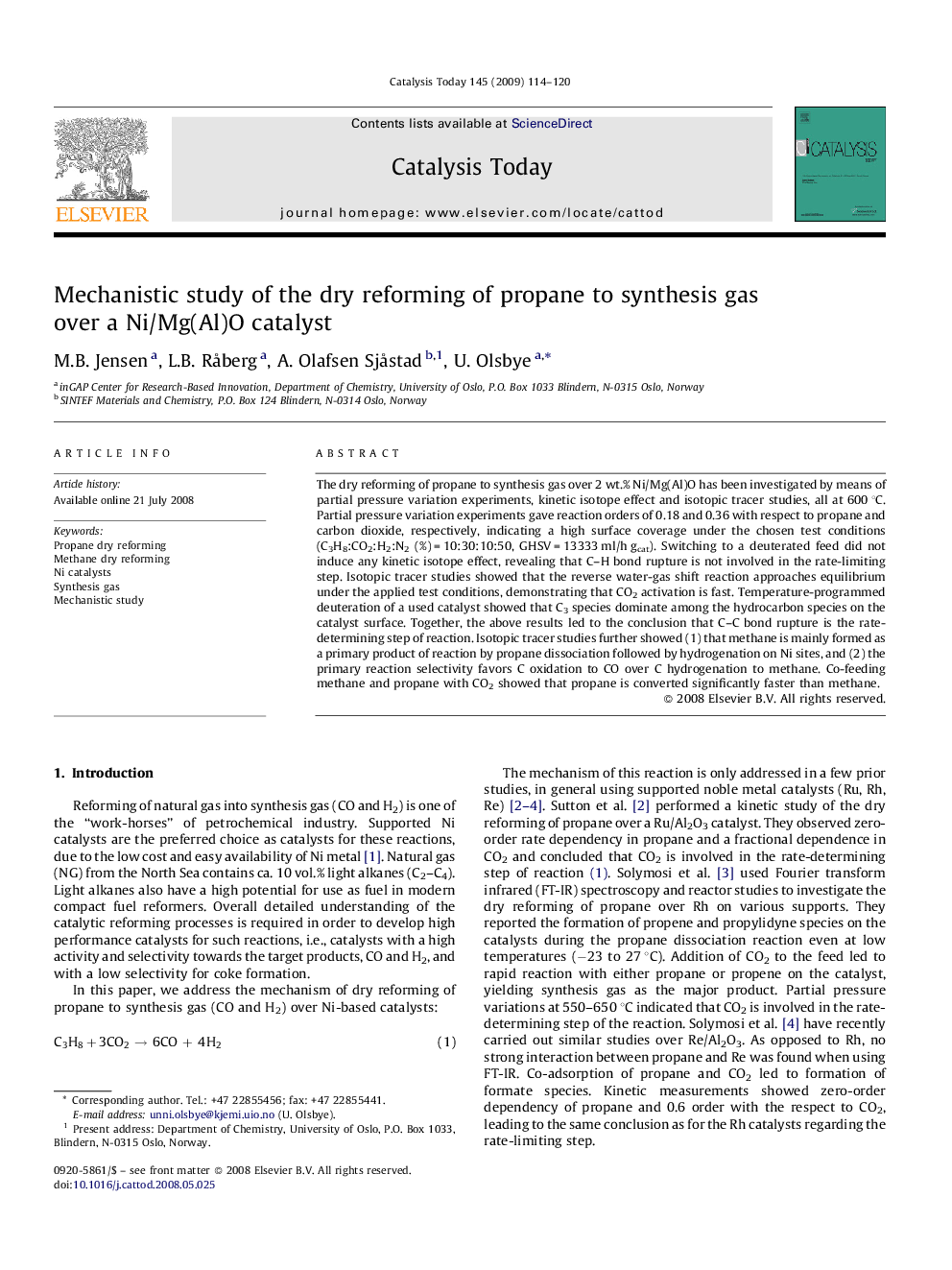| Article ID | Journal | Published Year | Pages | File Type |
|---|---|---|---|---|
| 56964 | Catalysis Today | 2009 | 7 Pages |
The dry reforming of propane to synthesis gas over 2 wt.% Ni/Mg(Al)O has been investigated by means of partial pressure variation experiments, kinetic isotope effect and isotopic tracer studies, all at 600 °C. Partial pressure variation experiments gave reaction orders of 0.18 and 0.36 with respect to propane and carbon dioxide, respectively, indicating a high surface coverage under the chosen test conditions (C3H8:CO2:H2:N2 (%) = 10:30:10:50, GHSV = 13333 ml/h gcat). Switching to a deuterated feed did not induce any kinetic isotope effect, revealing that CH bond rupture is not involved in the rate-limiting step. Isotopic tracer studies showed that the reverse water-gas shift reaction approaches equilibrium under the applied test conditions, demonstrating that CO2 activation is fast. Temperature-programmed deuteration of a used catalyst showed that C3 species dominate among the hydrocarbon species on the catalyst surface. Together, the above results led to the conclusion that CC bond rupture is the rate-determining step of reaction. Isotopic tracer studies further showed (1) that methane is mainly formed as a primary product of reaction by propane dissociation followed by hydrogenation on Ni sites, and (2) the primary reaction selectivity favors C oxidation to CO over C hydrogenation to methane. Co-feeding methane and propane with CO2 showed that propane is converted significantly faster than methane.
